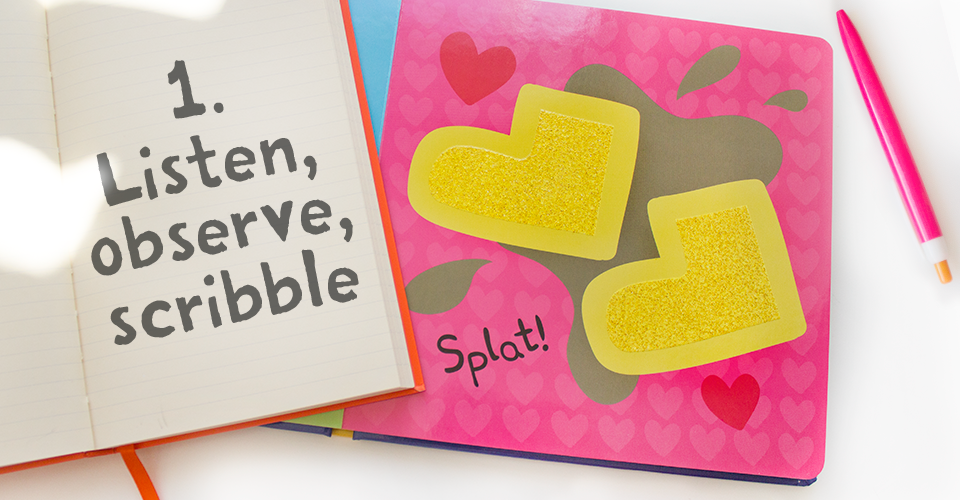How to write a picture book

Daddy, I Can't Sleep author Alan Durant gives his top tips on creating a picture book that kids will want to read again and again.
I’ve written many stories for children of all ages – from picture books to young adult fiction. You might think that picture books must be easier because they are so short. But you’d be wrong! A really good picture book, as you’ll know if you’ve ever read and shared one with a child, may seem satisfyingly simple but will probably have taken years and many drafts to create. No, writing a picture book isn’t easy, but it’s very rewarding.
So, how do you go about it?
Here are five steps to consider:
1. Listen, observe, scribble
The first thing you need to write a story is an idea. If you have young children (or grandchildren), keep a notebook handy and jot down things they say and do and are interested in. Ideas often spring up this way. Or perhaps it’s something that you recall from your own childhood. You might well find you reject a number of ideas before you come across one that really works for you.
2. What's the point?
A story told to a specific child has its own value, but if you want to take it further it needs to have a wider resonance. So why would any child who doesn’t know you want to listen to your story? The theme doesn’t have to be original – the same ones come up time and time again (a favourite toy, fear of the dark, love between child and parent, common childhood experiences) – but the way you treat it does. Make it uniquely yours.
3. Human, alien or animal?
You’ve got an idea and a theme, now you need a character (or two). Who is your young reader going to identify with? You might decide it should be a girl or a boy (never an adult!) – but maybe it could be an animal instead: a bear, a cat, a monkey… Animal characters often are used anthropomorphically (acting as a child would), but sometimes are chosen for some particular natural trait they have – chameleons change colour, skunks make a stink. They also have more universality – for example, in a picture book story an elephant is just an elephant, we don’t think about its ethnic background. You might go even further and make your main character an alien – or set the story on an alien planet. Characters are the most important element of any story so it’s vital to get them right. They need to have “appeal”, even if they behave badly!
4. Keep it simple, make it sing!
Picture books are for young children. Keep sentences short and easy to follow. There’s nothing wrong with throwing in the odd unfamiliar word but too many and you’ll lose your reader. The type is large and pictures need space so you don’t have unlimited words (a max of 600-700, but preferably fewer). Like a poem, a picture book is written to be read aloud, so make the language sing. Only use rhyme if you are sure your story needs it and every word is moving the story on. More important are rhythm and repetition – how the story sounds. Remember you are writing for an older reader (a parent or sibling perhaps) and a child listener. It’s not easy, but you need to entertain them both. Keep the humour broad – irony’s a waste of time!
5. Don't forget the pictures
A picture book is a collaboration between an author and an illustrator (unless you’re one of the few who have the skills to be both). So think of the pictures as you write. Is there enough in your words for an illustrator to picture – changes of place, time? Is there too much detail? You don’t need to describe clothing, scenery, etc, in any detail because it will be in the pictures. Think pictorially and cut out what you don’t need (even if it’s your favourite piece of writing; if it’s not serving the story, then it has to go!).